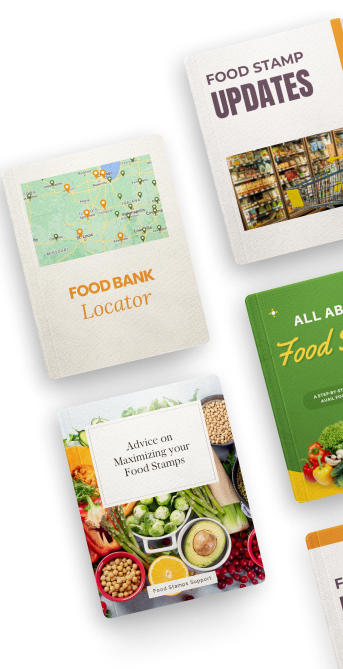How SNAP/EBT Support Programs are Changing Lives
In an era where economic stability remains a persistent concern for millions of Americans, government assistance programs have emerged as a vital lifeline for those facing financial hardships. One such program, the Supplemental Nutrition Assistance Program (SNAP), previously known as food stamps, has gained substantial attention nationwide. This article embarks on a journey to explore the intricate world of SNAP/EBT support programs, offering insights into their operational mechanisms, profound community impacts, and recent trends that are redefining food assistance in the United States.
The Evolution of SNAP/EBT
The SNAP program traces its roots back to the Great Depression when widespread poverty and hunger gripped the nation. Initially introduced in 1939, it was designed to assist struggling families in purchasing essential groceries. Over the decades, SNAP has significantly evolved in response to changing social and economic landscapes. Today, SNAP utilizes Electronic Benefit Transfer (EBT) cards, functioning like debit cards. These EBT cards offer eligible individuals and families a means to acquire essential food items, facilitating greater flexibility and dignity in their access to nutrition.
Recent Trends in SNAP/EBT Programs
1. The Pandemic Effect
The COVID-19 pandemic thrust SNAP/EBT programs into the spotlight as unemployment rates soared and economic hardships intensified. Millions of Americans turned to these programs as a lifeline to put food on their tables. The government's response was swift and substantial, with initiatives such as increased benefits and expanded eligibility criteria. These measures proved indispensable in mitigating food insecurity during these tumultuous times, underscoring the program's adaptability and responsiveness to crises.
2. Online Access
In an age characterized by digital convenience, SNAP recipients now enjoy the convenience of online grocery shopping. This technological innovation has been transformative, especially for individuals with limited mobility or those in food deserts. It has expanded access and reduced barriers that once hindered individuals from accessing fresh and nutritious food.
3. Holistic Approaches
Recent trends in SNAP/EBT programs reflect a shift towards holistic approaches to nutrition. Initiatives promoting the purchase of fresh produce and healthier food choices have gained traction. These incentives address food access and prioritize access to nutritious options, aligning with broader efforts to combat diet-related health issues such as obesity and diabetes.
The Impact on Communities
SNAP/EBT programs wield a profound influence, leaving an indelible mark on individuals and the communities they call home:
1. Alleviating Food Insecurity
Food insecurity, a persistent issue in America, faces a resolute adversary in SNAP. By providing essential funds for groceries, the program ensures that vulnerable populations, including children and the elderly, have consistent access to nourishing meals. It acts as a safety net, shielding countless families from the ravages of hunger.
2. Boosting Local Economies
SNAP dollars do not merely support individuals; they also stimulate local economies. Every dollar spent through SNAP generates additional economic activity within communities. Local businesses and farmers benefit as increased demand for groceries drives economic growth.
3. Enhancing Health Outcomes
Access to nutritious food has far-reaching health implications. SNAP's emphasis on healthier food choices can improve health outcomes, potentially reducing the long-term healthcare costs associated with poor nutrition. By nourishing bodies, SNAP promotes wellness.
Challenges and Future Prospects
Despite their notable successes, SNAP/EBT programs face enduring challenges that require attention and innovation:1. Stigma and Barriers
Many eligible individuals do not enroll in SNAP due to stigma or a lack of awareness. It is imperative to undertake extensive outreach efforts to ensure that all those in need can access this vital support, erasing the stigma associated with food assistance.
2. Funding and Budgets
The allocation of funds for SNAP programs remains a debate in Congress. Ensuring consistent and adequate funding is essential for the program's sustainability and its capacity to meet the needs of a dynamic and evolving society.
3. Technological Advances
Continued investment in technology is necessary to improve program efficiency and ensure equitable access to online shopping options. Bridging the digital divide is crucial in guaranteeing that all recipients can take full advantage of the program's benefits.
Conclusion
In an ever-changing world, SNAP/EBT support programs remain a steadfast safety net for countless Americans. Recent trends underscore a commitment to a more comprehensive approach that addresses food access, nutritional quality, economic impact, and the health of individuals and communities. As we journey forward, these programs will continue to evolve, playing a pivotal role in the lives of those who depend on them.
Whether in times of crisis or everyday struggles, SNAP/EBT stands as a beacon of support and hope, serving as a poignant reminder that no one should endure hunger in the land of plenty. By addressing persistent challenges and embracing emerging opportunities, we can ensure that SNAP/EBT programs continue improving lives, making America a place where no one is left behind.

















